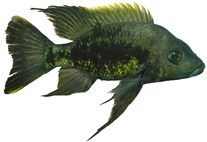Abstract
Mononchoides composticola was isolated during a survey on free living nematodes from vermicompost in Iran. This population of M. composticola is characterised by a dorsal claw-like tooth; 7–9 µm long and 3–5 µm wide, 14–15 finely visible longitudinal ridges on the cuticle, in which each ridge comprises two lines, long spicules (39–45 μm long), a short gubernaculum (15–17 µm or less than half of the spicule length), two pairs of precloacal papillae, five pairs of postcloacal papillae, papillae (v3) comprising three small papillae, and a long filiform tail (418–654 μm in females, 382–455 μm in males). Molecular analysis of M. composticola based on sequence of the 18S rDNA placed it close to M. composticola (GU943511; GU943512; from Belgium) and M. striatus (AY593924; from The Netherlands) in a well supported clade (1.00 posterior probability). Measurements, illustrations, LM and SEM pictures, and the phylogenetic position of M. composticola are given.

